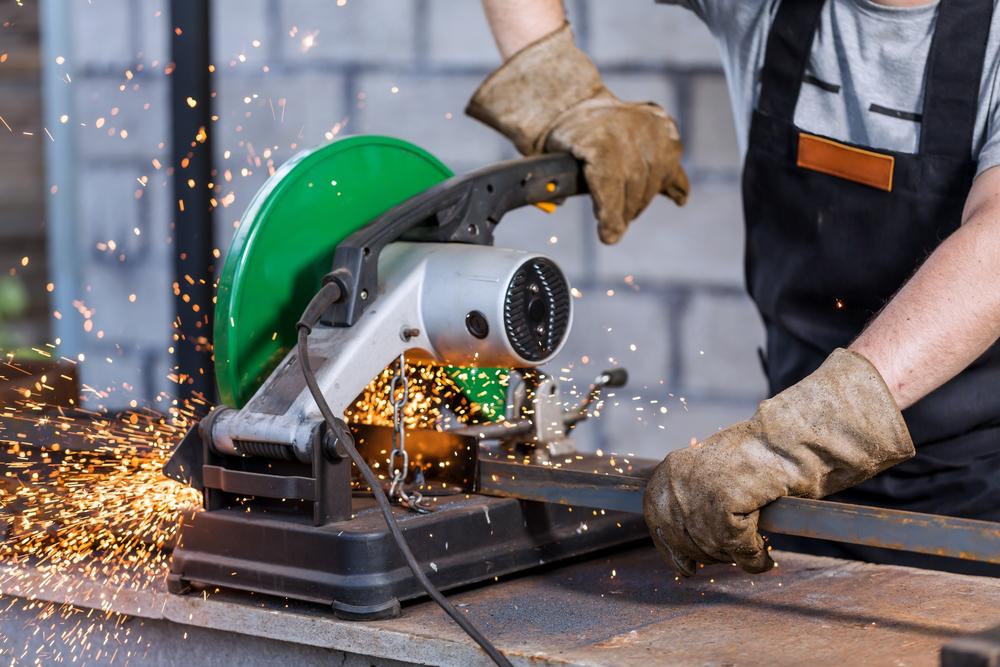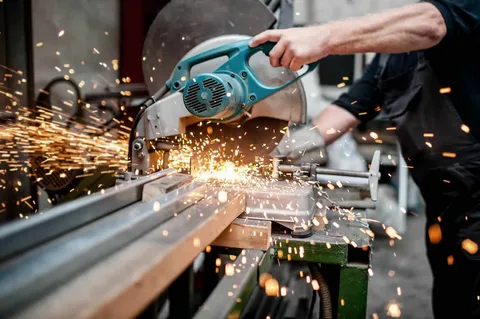The industrial landscape of Adelaide has been shaped and reshaped by the evolving techniques of Steel Cutting Adelaide. This transformation has influenced the pace at which industries operate and the quality and intricacy of the products being manufactured. The journey from manual, labour-intensive processes to highly sophisticated, automated methods reflects innovation, technological advancement, and adaptability to changing global standards.
The Early Days of Steel Cutting in Adelaide
In the formative years of Adelaide’s industrial emergence, steel cutting was a task that relied heavily on manual labour. Armed with basic hand-held tools such as chisels, hammers, and hacksaws, the workforce undertook the arduous process of cutting steel. This manual approach demanded considerable physical exertion and a meticulous level of precision from the labourers.
The rudimentary methods employed were inherently labour-intensive and came with limitations, notably in the maximum thickness of steel that could be effectively cut and the complexity of the designs that could be achieved. During this period, the pace of work was significantly slower, and the capabilities of the tools and techniques available markedly constrained the scope for creativity and innovation in steel designs.
Introduction of Mechanical Cutting Tools
As Adelaide’s steel industry began to burgeon, the introduction of mechanical cutting tools marked a pivotal evolution, bridging the gap between manual, labour-intensive practices and the dawn of automated technology. The inception of these tools can be traced back to the early 20th century when industries worldwide sought ways to enhance efficiency and precision in manufacturing processes.
In Adelaide, mechanical saws and shears became instrumental in transforming steel cutting into a more streamlined operation. These mechanical marvels offered a significant leap in productivity, allowing for quicker cuts without the exhaustive manual effort previously required. While less advanced than their modern counterparts, automated cutting tools provided a foundation for developing more sophisticated technologies.
They operated on simple mechanical principles, using rotary or reciprocating blades to make incisions in steel. Despite their rudimentary nature, these tools represented a significant advancement, enabling the local industry to increase output and tackle larger and more complex projects than ever before. The transition towards mechanical cutting was not instantaneous but evolved gradually as the benefits became increasingly apparent.
The Advent of Oxy-Fuel and Plasma Cutting Techniques
The mid-20th century marked a significant turning point for the steel-cutting industry in Adelaide with the introduction of oxyfuel and plasma-cutting technologies. Oxy-fuel cutting emerged as a powerful technique, leveraging a mix of oxygen and fuel gas to produce a flame that easily reaches temperatures sufficient for slicing through thick steel plates.
Meanwhile, plasma cutting brought a novel approach by employing a jet of ionised gas at high velocity. This method enabled the metal to be melted swiftly and expelled from the cut, facilitating the execution of more intricate designs and patterns. These cutting-edge techniques not only expedited the cutting process but also enhanced the precision with which steel could be cut, opening new avenues for the fabrication of complex shapes that were previously unattainable.
Adopting oxyfuel and plasma cutting signified a leap towards greater efficiency and flexibility in Adelaide’s steel-cutting practices, embodying the city’s ongoing pursuit of industrial innovation and excellence.
 The Impact of Laser Cutting on Adelaide’s Steel Industry
The Impact of Laser Cutting on Adelaide’s Steel Industry
The advent of laser cutting technology has marked a transformative era in Adelaide’s steel industry, underpinning the shift towards higher precision and efficiency in manufacturing processes. This cutting-edge method, which harnesses a high-power laser beam to cut through steel seamlessly, has created complex designs with unparalleled accuracy.
Adelaide’s industrial sector has witnessed a remarkable enhancement in the quality of outputs, with laser cutting facilitating the production of components that boast clean, smooth edges and minimal waste. This technology supports the intricate detailing required in modern manufacturing and aligns with the industry’s pursuit of cost-effective and environmentally responsible practices.
The precision afforded by laser cutting has reduced the need for further processing, streamlining production lines and setting new standards in the fabrication of steel products. The influence of laser cutting in Adelaide’s steel industry exemplifies the city’s commitment to adopting technologies that drive innovation, improve operational efficiencies, and contribute to the sustainability of manufacturing practices.
The Role of Computer Numerical Control (CNC) in Modern Steel Cutting
The advent of Computer Numerical Control (CNC) systems represented a quantum leap in steel cutting. This technology heralded a new era of manufacturing, where the intricacies of cutting patterns and the precision of executions were elevated to unprecedented levels. In Adelaide, incorporating CNC technology into steel-cutting operations signified a departure from conventional methodologies, propelling the local industry into the vanguard of global manufacturing practices.
Through CNC, the commands for cutting are meticulously programmed and executed by machines, ensuring unparalleled accuracy and consistency. This shift not only augmented the efficiency of production processes but also minimised the incidence of human error, thereby elevating the quality of the final product.
The versatility of CNC technology facilitated the realisation of complex designs, which were once deemed impractical or too time-consuming to achieve. Its impact extended beyond just the enhancement of precision; it revolutionised the speed at which products could be brought to market, fortifying Adelaide’s competitive edge in the steel manufacturing sector.
Advancements in Water Jet Cutting Techniques
Water jet cutting has emerged as a pivotal technology within Adelaide’s steel industry, recognised for its remarkable flexibility and environmental credentials. This advanced method employs a high-velocity stream of water, often combined with abrasive materials, to slice through steel with exceptional precision. The technique distinguishes itself by not inducing heat, thus averting any thermal distortion of the material.
This characteristic is particularly beneficial for projects demanding high accuracy and a pristine finish. The evolution of water jet cutting technology has seen significant improvements in the pressure and accuracy of the cutting stream, enabling the execution of more intricate designs than previously possible.
Furthermore, its capacity to cut diverse materials beyond steel without compromising finish quality or efficiency underscores its versatility. The technology’s alignment with eco-friendly practices, such as minimising waste and avoiding the generation of hazardous by-products, reflects Adelaide’s commitment to sustainable manufacturing methodologies.
The Future of Steel Cutting in Adelaide: Embracing Sustainability
As Adelaide strides into the future, its steel industry stands at the cusp of a paradigm shift, where sustainability is set to become the central tenet guiding its evolution. This forward-looking vision encompasses a holistic approach to steel cutting, integrating environmentally responsible practices across all facets of production. Innovations in technology and methodology are expected to play a pivotal role, with advancements aimed at reducing carbon footprints, conserving energy, and maximising material efficiency.
The focus on sustainability heralds the adoption of renewable energy sources to power-cutting operations, which promises to diminish the environmental impact of steel production significantly. Moreover, the continued refinement of cutting techniques such as water jet and laser, which already contribute to minimising waste, is anticipated to enhance their eco-friendliness further.
By integrating these sustainable practices, Adelaide’s steel industry is poised to set a benchmark for green manufacturing, aligning with global environmental goals and consumer expectations. The commitment to sustainability is a response to ecological imperatives and a strategic adaptation to a market that increasingly values eco-conscious manufacturing. This shift represents a profound transformation, reshaping the industry’s identity and ensuring its sustainability for future generations.
The Rise of Automation in Steel Cutting Processes
The landscape of steel cutting in Adelaide has been notably transformed by the rise of automation, streamlining processes and setting new benchmarks in efficiency and accuracy. Several key developments characterise this shift towards automation:
– The integration of robotic arms and automated feed systems has significantly reduced human intervention, leading to a decrease in production times and an increase in safety within the workplace.
– Advanced software solutions now offer precise control over cutting machines, enabling the execution of complex designs with minimal error margins.
– Real-time monitoring systems have been implemented to track the performance and efficiency of cutting processes, facilitating immediate adjustments to enhance productivity.
– Automated loading and unloading mechanisms have further optimised the workflow, allowing for continuous operation and significantly reducing downtime.
– Adopting machine learning algorithms has paved the way for predictive maintenance, ensuring machinery operates at peak efficiency and reducing the likelihood of unexpected breakdowns.
These advancements underscore Adelaide’s commitment to leveraging cutting-edge technologies to refine steel-cutting processes. The transition towards automated systems highlights a pivotal evolution in the industry, where efficiency, precision, and innovation converge to meet the dynamic demands of the market.
The Rise of Automated Steel Cutting Adelaide Methods
In Steel Cutting Adelaide industry, the adoption of automated steel-cutting methods has ushered in a new era of precision, efficiency, and innovation. These methods represent a significant leap forward from traditional manual and mechanical processes, offering numerous advantages:
– Enhanced precision and consistency in cuts, thanks to the sophisticated programming of CNC machines and laser cutters.
– Substantial reductions in production times, as automated systems can operate continuously without fatigue, unlike their human counterparts.
– A notable decrease in material wastage as advanced algorithms calculate the most efficient cutting paths.
– Improved safety in the workplace, as the need for direct human interaction with cutting tools is minimised.
– The ability to easily adapt and reprogram machines for different tasks, allowing for greater flexibility in production runs.
Automated steel-cutting methods are shaping the future of Adelaide’s manufacturing landscape, highlighting a commitment to embracing technological advancements. These methods not only optimise operational capabilities but also underscore the industry’s ongoing adaptation to the demands of modern manufacturing.
FAQ’s
1. What distinguishes plasma cutting from oxy-fuel cutting in Adelaide’s steel industry?
Plasma cutting utilises a jet of ionised gas at high velocity to melt the metal, allowing for intricate designs and patterns. In contrast, oxy-fuel cutting relies on a flame produced by a mixture of oxygen and fuel gas to slice through thick steel plates.
2. How has laser cutting technology influenced the quality of steel products in Adelaide?
Laser cutting has enabled the creation of complex designs with unparalleled accuracy, improving the quality of outputs with clean, smooth edges and minimal waste, thus elevating the standard of manufactured steel products.
3. What role does Computer Numerical Control (CNC) play in modern steel cutting?
CNC technology has transformed steel cutting by programming machines to execute cuts with exceptional precision and consistency, enhancing production efficiency and minimising human error.
4. How does water jet cutting contribute to sustainable manufacturing practices in Adelaide?
Water jet cutting avoids thermal distortion by using a high-velocity stream of water, minimising waste and hazardous by-products, and aligning with Adelaide’s commitment to environmentally responsible manufacturing methods.
5. What advantages does automation offer to the Steel Cutting Adelaide processes?
Automation streamlines Steel Cutting Adelaide by reducing human intervention, improving safety, and enabling continuous operation with sophisticated software for precise control, significantly enhancing productivity and efficiency.
Conclusion: The Continuing Evolution of Steel Cutting Techniques
The journey through Steel Cutting Adelaide landscape is a testament to the relentless pursuit of excellence and innovation within the industry. From the humble beginnings of manual labour to today’s sophisticated, automated, and sustainable practices, each phase of evolution reflects an industry in constant transformation. As Adelaide’s steel sector embraces new technologies and methodologies, it remains at the forefront of global manufacturing, ready to adapt to future challenges and opportunities.
| Other Good Articles to Read |
| skank blogs |
| unreal blogs |
| tba blogs |
| all city forums |
| dany blogs |
| the music blogs |
| key forums |
| the big blog theory |
| joe blogs |
| blogs 4 me |
| Blogs Emon |
| Related Business Listings |
| Contact Directory |
| Local Business Profiles |



